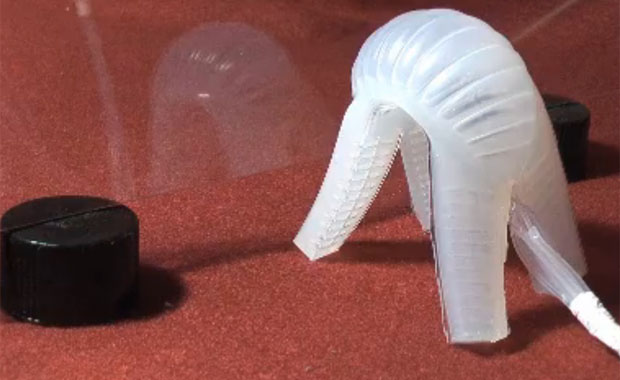
Based on a report by Scientific American, the effectiveness of robots during surgery is riddled with conflicting view points. Some praise the use of robots in surgery, especially during invasive surgeries, while others believe the rigidity and complexity of the tools offer little to no help. The latter argument has been mostly true, however a company based in Boston seeks to redefine the utilization of robots in surgery.
Soft Robotics, Inc., a Boston-based start-up company, is exploring the use of rubbery biomedical tools to enhance robotic surgery in order to help improve the field. The company is developing rubbery robots for use in surgery and other biomedical applications and is utilizing technology produced at Harvard University's Whitesides Research Group.
Spearheaded by renowned Harvard chemist and materials scientist, George Whitesides, who is also a member of Scientific American’s Board of Advisers and also serves as both a board member and scientific advisor to Soft Robotics. As of today the group's most well-known creation is a "squishy, X-shaped quadruped made from elastomers [stretchy plastics]" and controlled by compressed air.
“Hard robots require a sophisticated feedback mechanism to help them determine how much force to apply during surgery so they do not damage our delicate tissues and organs. Soft robots could take advantage of their rubbery appendages to reduce the likelihood of surgical damage,” said CEO of Soft Robotics, Carl Vause.
“Specifically, with medical devices, you would be allowing a robotic instrument to get into a small space, be reconfigurable in that space and do it in a way that’s tissue compliant,” he added.
One other advantage of rubber robots is that they can be printed in 3-D in a single day from silicone and other materials at a much lower cost ($20) than regular robots.
Experiences so far with the best-known robot surgical system, Intuitive Surgical’s da Vinci, have demonstrated the promise and downfalls of traditional medical robots. Da Vinci, which costs about $2 million and was granted approval by the U.S. Food and Drug Administration in 2000, enables surgeons to manipulate laparoscopic instruments and an endoscopic camera attached to four robotic arms. Intuitive Surgical claims more than 1.5 million da Vinci surgeries have been performed in major clinical centers worldwide. Around 367,000 of those procedures were performed last year in the U.S., where about 2,000 systems have been installed. Most procedures were gynecologic or urologic, in particular hysterectomies and prostatectomies.
However, reports point that by utilizing a da Vinci can significantly bump up the cost of surgery by up to $2,500. Additionally, Intuitive Surgical is facing several lawsuits on a range of issues, including sepsis, severe bowel injuries and punctured blood vessels, organs or arteries.
“It will be some time before soft robots are capable of anything nearly as sophisticated as da Vinci, but there is a lot of interest in how this emerging technology could be used in the medical field, either on its own or combined with a surgical system like da Vinci. Soft Robotics is part of a one-year project that the Defense Advanced Research Projects Agency (DARPA) kicked off in June to study how soft robots might be used as battlefield medical tools. By next June,DARPA wants to see if soft robotics can address a number of problems that battlefield medics face,” said Vause.
DARPA is interested in soft robots for a number of reasons; scouting devices or prosthetics for example, to be part of the agency’s Maximum Mobility and Manipulation (M3) program that was initiated back in 2011. Indeed, the Whitesides Research Group, whose work was part of M3, last year developed a $100 silicon robot that could walk, change color, and illuminate in the dark.











